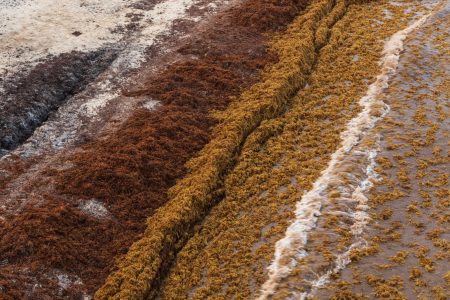
Sargassum spp
 22 Jun 2022
22 Jun 2022
Seaweed presents itself as a potential fodder alternative for livestock in arid climates.
A study was carried out to compare the nutritional quality of Macrocystis pyrifera a species of aquatic algae and a group of Sargassum species (seaweed), with desert plants, cereals and flours regularly used as feed for livestock in the peninsula of Baja California during dry season.
Sargassum spp
| The associated enzymatic digestive activity and the presence of enzymatic digestive inhibitors and lectins were evaluated, as well as their general chemical analysis. |
Reduced water availability has affected the economic development of this region, being agriculture one of the most affected activities with a significant impact on livestock. Although it is not considered a suitable region for livestock production, its inhabitants continue pursue this productive activity. This has more to do with tradition than due to any real economic gains. During the dry period, scarcity of water and fodder can be a serious problem within this region.
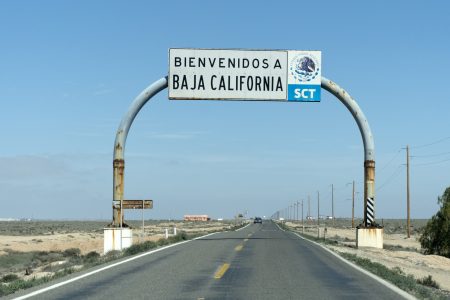
Annual rainfall dictates the livelihood of livestock production in the region as it fills natural and artificial lagoons, and promotes the growth of forage grasses and wild plants. In this hostile environment, productive success or failure is not determined by weight gain, but by the survival of cattle.
However, there are important resources on the peninsula. These however, are of marine origin (seaweed) differing from common sources of cattle feed found on land. Nonetheless, they possess great potential as cattle feed alternatives within the peninsula’s arid region.
Materials and Methods
All the samples of seaweed material were randomly collected in Bahía de Tortugas, B.C.S., Mexico, during the summer period. The samples were stored in a glass desiccator, at room temperature (25 °C)
⇒ Established methods by AOAC (1990) were used for the determination of: moisture, protein, lipids, crude fiber and carbohydrates.

Protease activities in algae extracts were determined according to the methodology described by Vega (1995). The determination of preliminary amylase activity in plant extracts was carried out according to Nolasco and Vega (1992).
Controls for commercial trypsin and amylase at 1 mg/mL protein in distilled water were prepared. The proteolytic and amylolytic activities of the extracts were determined as the relative percentage of controls. The presence of protease and amylase inhibitors was determined by exposure of commercial trypsin and amylase to crude extracts. For each test, the mixtures were incubated for 2 hours at 37 °C. After incubation, the remaining enzymatic activity was determined as indicated above.
⇒Bovine trypsin and commercial amylase were exposed to TrisHCl buffer for respective controls.
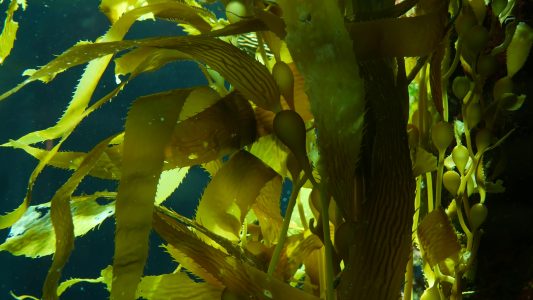
Macrocystis pyrifera
DISCUSSION
Initial results suggest that Macrocystis pyrifera and Sargassum spp. have potential as energy and mineral supplements for livestock, as they contain moderate energy levels and relatively few or no toxins at all. Nutritional values for these seaweeds were also compared with the values of other cattle feed sources and supplements.
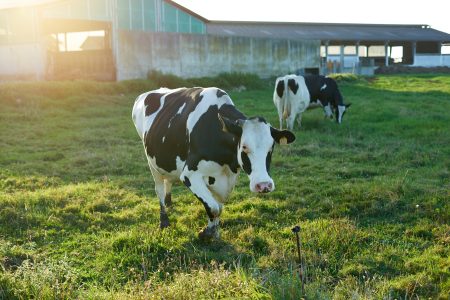
The obtained results, led researchers to suggest alternatives for the use and management of algae sources as cattle feed during the dry season, in the Baja California peninsula.
Protein levels found in Sargassum flours may be adequate for growing beef cattle and maintenance diets. However, the protein levels found in Macrocystis flour may be deficient for such purposes(NRC 2000).
| In decreasing order, the protein content of the analyzed feed materials was as follows: Fishmeal/Shrimp Head Meal > Soybean meal > Red crab flour > Mesquite leaves > Wheat flour/Palo verde leaves > White stick leaves > Sorghum flour > Sargassum flour > Macrocystis flour |
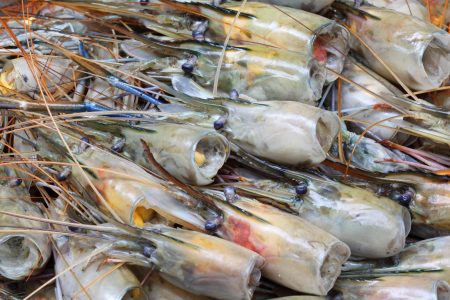
Shrimp heads
CONCLUSION
The protein concentration of aquatic algae was low, compared to that of other plants. The presence of lectins and enzyme inhibitors was negligible when compared to desert plants.
The use of aquatic algae as supplementary fodder for cattle in herds is apparently a good strategy, despite its low protein levels.
High levels of carbohydrates, minerals and lipids can help meet maintenance requirements, especially when grasses are not available.
Source: Redalyc. Cuban Journal of Agricultural Science(2006)
Subscribe now to the technical magazine of animal nutrition
AUTHORS

Nutritional Interventions to Improve Fertility in Male Broiler Breeders
Edgar Oviedo
The Use of Organic Acids in Poultry: A Natural Path to Health and Productivity
M. Naeem
Synergistic Benefits of Prebiotics and Probiotics in Poultry, Swine, and Cattle
Gustavo Adolfo Quintana-Ospina
Hybrid Rye Potential in Laying Hen Feed Rations
Gwendolyn Jones
A day in the life of phosphorus in pigs: Part I
Rafael Duran Giménez-Rico
Use of enzymes in diets for ruminants
Braulio de la Calle Campos
Minerals and Hoof Health in the Pregnant Sow
Juan Gabriel Espino
Impact of Oxidized Fats on Swine Reproduction and Offspring
Maria Alejandra Perez Alvarado